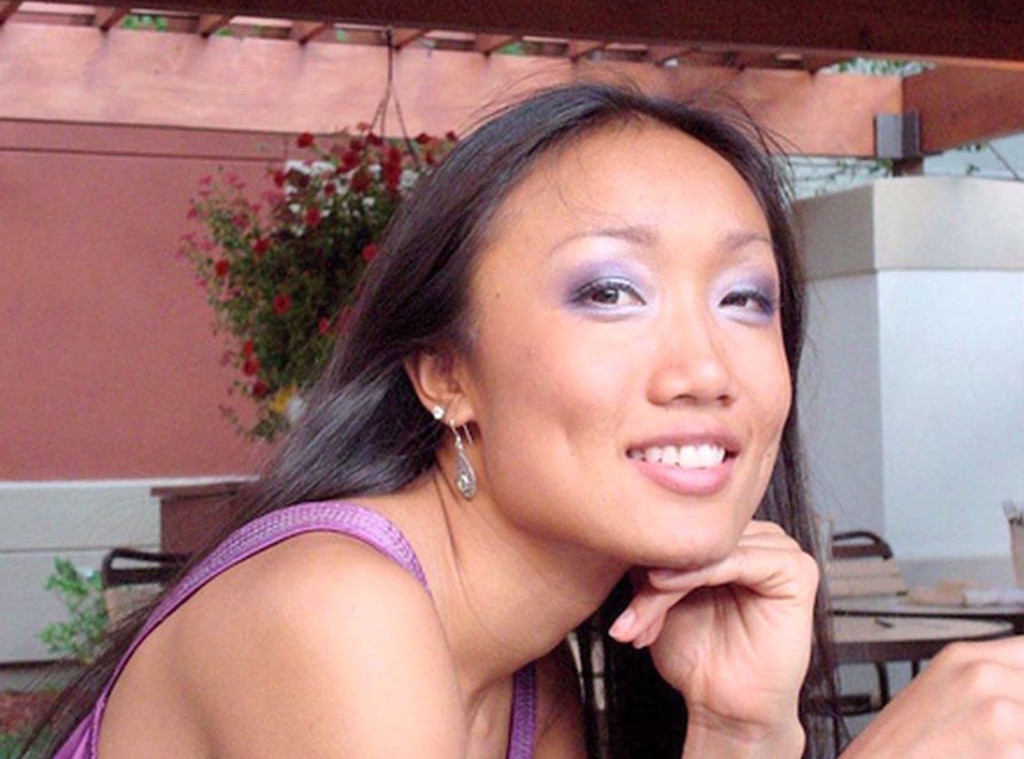
Courtesy of Mary Zahau-Loehner
To be clear, there is no official murder investigation into the death of Rebecca Zahau.
But not for lack of trying by her family, who eight years later still do not believe that the 32-year-old woman committed suicide at her boyfriend’s palatial San Diego-area home in 2011.
“I, personally, have been agonizing over this case ever since I heard about it,” says former prosecutor Loni Coombs in the new Oxygen limited series Death at the Mansion: Rebecca Zahau, which premieres tonight. “Ever since I heard that they declared it a suicide, I wanted to know, what’s really going on here?”
Coombs notes that the general narrative of the unarguably tragic events in question seemed to focus on the fact that Zahau was a pretty Burmese immigrant dating a millionaire pharmaceutical executive who was 22 years her senior, and that’s where her story ended. “And if she wasn’t beautiful, they probably wouldn’t have talked about her at all,” Coombs adds.
Zahau was also a college-educated world traveler who spoke six languages and worked as a certified ophthalmic technician in Arizona until about seven months before she died in the small island resort city of Coronado, Calif.
Her sister Mary Zahau-Loehner, who had moved with Rebecca to the United States from Burma a decade prior, told The Daily Beast in 2011, “She has close friends all over the place. She was a person who wasn’t afraid to move. If she thinks there is a better chance for her career, she wasn’t afraid to move to another city. She was in Phoenix only the last four years. She was in California and New York.”
In December 2010, Zahau reportedly quit her job to spend more time with her boyfriend and his family.
And on July 13, 2011, a Wednesday, authorities say Zahau hanged herself from a second-story balcony outside a guest bedroom in the 27-room Coronado mansion where she was living with her boyfriend, Jonah Shacknai.
She was naked, and her hands were bound behind her back, and her feet were bound as well, according to Adam Shacknai, Jonah’s brother. Adam told police he found her that way at 6:45 a.m., then cut her down. Her body was on the lawn in the backyard when police arrived at the scene.
Adam was staying in a guesthouse on the property and was believed to be the only other person home that morning. Jonah was not in Coronado at the time, according to police.
Mary Zahau-Loehner told ABC News that she had just spoken to her sister from her home in Missouri close to midnight on Tuesday. “She was normal, fine, just getting ready to go to bed,” Zahau-Loehner said.
A neighbor told local ABC affiliate KGTV that they had heard loud music coming from the mansion on Tuesday night and assumed that there had been a party, though police never confirmed there was any gathering.
Jonah Shacknai bought the 12,000-square-foot house, which was originally owned by transportation and real estate mogul John Spreckels, in 2007 for a reported $13 million and had primarily used it as a vacation home. His company, Medicis Pharmaceutical Corporation, was based in Scottsdale, Ariz., where he met Zahau. (Rebecca had reportedly just secured a divorce in February 2011 and was using her maiden name again after going by Nalepa while married.)
“They were together for two or three years and I think they were happy,” Zahau-Loehner said. “She goes to that Coronado house with his kids, they go there in the summertime.”
But that summer, tragedy had struck.
On Monday, July 11, Jonah’s 6-year-old son Max Shacknai had tumbled over a second-story banister and fell 9 feet to the ground floor, while he was apparently alone in the home with Zahau and her 13-year-old sister Xena, who called 911 at 10:10 a.m. The child didn’t have a pulse and wasn’t breathing when first responders arrived; he was taken to a local hospital and then transported to Rady Children’s Hospital San Diego.
Max was Jonah’s son with his second wife, Dina Shacknai; they divorced in 2008. Jonah has two older children from his first marriage.
Adam Shacknai had arrived in town Monday night in the wake of Max’s accident, police said.
“At this time, we have no information that would lead us to believe this is anything other than a tragic accident with the child,” Coronado Police Chief Louis Scanlon told reporters on July 14.
Max was in the hospital when Zahau died, and he died of his injuries on Saturday, July 16.
“His loving, kind and vibrant spirit will forever be in our hearts and those whom he touched every day,” Jonah Shacknai wrote in an email sent to various media outlets on July 17. “The loss to our families, Max’s many friends of all ages, and teammates, and the community is immeasurable.”
Ted Greenberg, owner of dog-boarding service Camp Diggity Dogs, told The Daily Beast at the time that Rebecca had called on the afternoon of July 11 to have her dog picked up, explaining that she had to go to the hospital because her son had been injured in a fall. When Greenberg went to pick up the dog the following morning, Zahau was “very quiet and calm, almost like someone was asleep in the house. She wasn’t hysterical…She asked me to keep the dog for a few days.”
Talking to reporters after Zahau was found dead, San Diego Sheriff’s Capt. Tim Curran called it “a very bizarre death.” But despite certain details that seemed antithetical to the assumption that Zahau committed suicide by hanging, stranger things had happened.
“There are some very unique ways” in which people kill themselves, Curran added. “If it was determined to be a suicide, people will do some very bizarre things.”
Two search warrants were executed on the property, one on July 13 and the other July 15, but all the details of the investigation were kept officially sealed until they were ready to release their findings.
“At this point we haven’t come to a conclusion,” Sgt. Roy Frank of the San Diego County Sheriff’s homicide department told The Daily Beast. “It is not an accident, so what that leads to is a suicide or homicide. We process the case as if it is the worse-case scenario, and that way we don’t miss anything.”
A week after Zahau died, Mary Zahau-Loehner told a reporter, “It was not a suicide. Because I know my sister.”

Dwight Smith/Horizon Eye Specialists
On the morning of Sept. 2, 2011, city and county officials announced at a press conference that Zahau’s death had been ruled a suicide. The trigger, they concluded, was guilt over what happened to Max.
Investigators explained, with the help of a reenactment video, that they believed she had made a makeshift noose with a piece of red rope and tied one end of it to the footboard of the bed before tying her feet together, slipping the noose around her neck and then binding her hands. Then she made her way outside to the balcony and got herself over the edge, they said. Toxicology tests found no drugs or alcohol in her system.
There was no evidence of a struggle and she “was alive when she went over the balcony,” Dr. Jonathan Lucas, San Diego County chief deputy medical examiner, told reporters.
As for tying herself up, Lucas said, it wasn’t common but “the thinking is, they bind themselves so that they won’t change their mind midway through.”
The evidence continued: her fingerprints were found on a knife that she apparently used to cut the rope, as well as on the door to the balcony. DNA evidence on the rope and the foot of the bed was a match to Zahau. Toe impressions on the dusty balcony also appeared to have been made by feet that were bound together. The bindings were tied with basic knots, no extra expertise needed. There was also a message written in black paint on the bedroom door, but authorities wouldn’t disclose what it said at the time.

Courtesy of San Diego Sheriff’s Department
In the autopsy report it stated that the message read, “She Saved Him Can You Save Her.” Investigators couldn’t definitively prove she wrote it, they said, because there was no other sample of her handwriting on a door, in paint, to compare it with.
“The [findings] are all compelling, and all point persuasively to a single conclusion: These deaths are not the result of any criminal acts,” San Diego County Sheriff Bill Gore said at the press conference. “Science is our best witness in this case. Science is not biased, nor does it lie.”
With regard to Max’s accident, they theorized that he could have been running down the hall when he tripped and stumbled over the banister. He had grasped for the chandelier before he fell to the floor; pieces of the light fixture were also found on the ground. Zahau was “obviously distraught” when interviewed afterward.
At 12:50 a.m. on the morning of July 13, investigators said, Zahau had called her voicemail and listened to a message from Jonah informing her that Max was likely going to die, after his condition had previously been declared stable.
Authorities said they believed she had killed herself within a couple of hours of hearing that message; Jonah Shacknai and his ex-wife were at their son’s bedside when it happened.
“While the investigation is over, the emptiness and sadness in our hearts will remain forever,” Jonah said in a statement in response to the police, sheriff and medical examiner’s findings. “Max was an extraordinarily loving, happy, talented, and special little boy. He brought joy to everyone who knew him, and we will miss him desperately.
“Rebecca too was a wonderful and unique person who will always have a special place in my heart. Nothing will ever be the same for our families after these losses, but with today’s information providing some much needed answers, we will try to rebuild our lives and honor the memories we carry with us.”
Meanwhile, Rebecca’s family wasn’t having it, and they hired a lawyer to further probe what happened.
The lawyer, in turn, hired forensic pathologist Dr. Cyril Wecht as a consultant to review the autopsy findings.
“I would have left the manner of death… as undetermined, because I think there are several things as far as I can see that have not been explained,” he said after the suicide finding was announced, CNN reported Sept. 7. He also said that the autopsy report showed Zahau had four hemorrhages on the top of her head that indicated blunt force trauma.
“That means your head struck something or was struck by something,” he said. “I repeat for emphasis: four separate locations. The head is contoured; to have it bruised in different places, that means you have to strike different parts of the head.” While contact with plants under the balcony would account for some of the abrasions on her body, Wecht continued, they wouldn’t account for the head injuries. The report also noted material that looked like tape residue on her mid-left shin and lower right leg, and a piece of a shirt that was wrapped around the rope was stuck in her mouth.
“Why would she do that?” Wecht noted. “Was she afraid of waking someone up by screaming?”
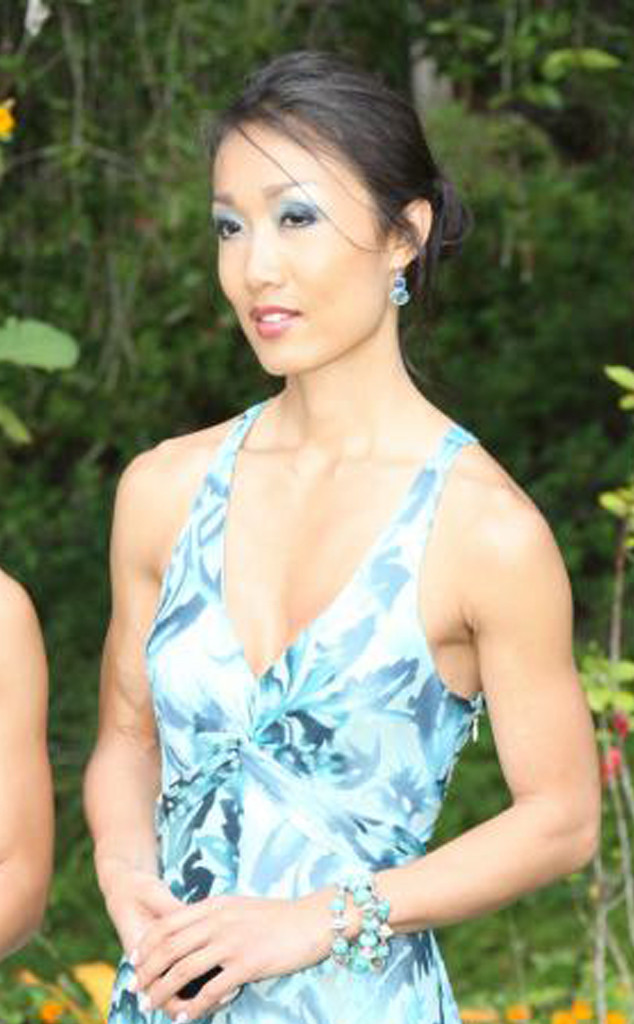
Courtesy of Mary Zahau-Loehner
“None of the observations listed above are inconsistent with the conclusions reached regarding the cause and manner of death of Rebecca Zahau,” Dr. Jonathan Lucas of the medical examiner’s office stated in a news release in response to the questions Wecht raised.
“My sister was murdered, that’s it,” another of Rebecca’s sisters, Snowem Horwath, told HLN’s Vinnie Politan on Sept. 7, 2011. “There is no way, no way, my sister would commit suicide in such a state.”
“My sister never had a psychiatric problem, never been on psychiatric medication and never had attempted suicide— let alone ever talked about harming herself,” Mary Zahau-Loehner also told Dr. Drew Pinsky for HLN.
“My sister did not commit suicide,” Horwath reiterated. “We, as a family, we want justice for [Rebecca] and we will fight however long needs to be until the murderer of my sister is found.”
The family made good on their vow to keep fighting, but they weren’t the only ones who wanted investigators to take a second look at the horrific events that occurred between July 11 and July 13.
Dina Shacknai, Max’s mother, hired her own experts to conduct an independent investigation as well and, in August 2012, Dr. Judy Melinek stated that she thought officials had gotten the circumstances of the 6-year-old’s death wrong, NBC 7 San Diego reported.
“It would be more accurate to certify that manner as a homicide, where homicide is defined as death at the hands of another,” Melinek said.
Dina Shacknai said in a statement, “Things just didn’t add up to me, so I hired independent experts to review the findings. When I started this process all I knew is that I wanted the truth, wherever that led, like any parent would…Even though nothing will bring my only child Maxie back, I owe it to him, as his mother, to make sure the true facts of his death are known. It’s important that his story be told, because this could happen to anyone’s child.”
To date, authorities have held fast to their findings that Max’s death was the result of an accident.

Courtesy of Mary Zahau-Loehner
Meanwhile, with Zahau’s family insisting that she didn’t kill herself, which in turn meant the story was alive and kicking in the media, in September 2011 Jonah Shacknai wrote to then-California Attorney General Kamala Harris to review San Diego officials’ findings.
“The unrelenting and often vicious speculation and innuendo in certain media outlets continue to bring further pain to everyone who has been touched by these tragic events,” he said in a statement, per NBC 7 San Diego. “It is intolerable to sit back and watch my other children and the rest of my family, and my former wife Dina’s family, tormented with these unfounded rumors and accusations.”
Harris’ office declined to review the findings, responding in a letter that they only got involved with local investigations “under very narrow circumstances,” and excessive speculation wasn’t one of them.
That November, Zahau’s sisters and Dr. Wecht went on Dr. Phil to share findings of a second autopsy conducted on Zahau, whose body was exhumed at the family’s request. A private donation fund reportedly paid the expenses.
Ultimately, Wecht said, he agreed that she died by hanging, but he believed someone could have placed that noose around her neck.
“My sister did not indicate that she was depressed, suicidal, or that she wanted to hurt herself,” Zahau-Loehner told Dr. Phil McGraw, who ultimately seemed to gently side with the original, official results. “It still feels like a dream or some bad horror movie.”
The family further disputed that Zahau wrote on the door, saying the handwriting didn’t look like hers, and noted that none of them had heard the since-deleted voicemail about Max that supposedly directly led to Zahau killing herself. They said they doubted the voicemail ever existed.
Zahau-Loehner said she got a text from Rebecca reading, in part, “I need to be strong for Jonah.” And they also wanted the attorney general’s office to investigate, they said.
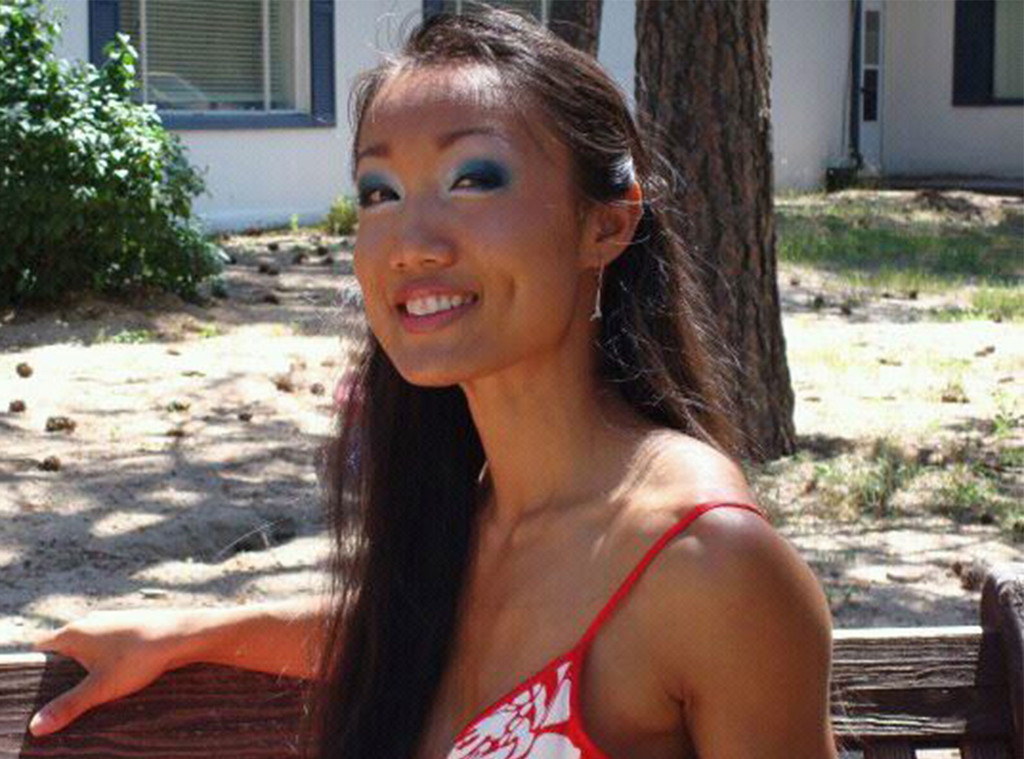
Courtesy of Mary Zahau-Loehner
The state never intervened, but Zahau’s family sued to have the case reopened in May 2013.
“Anybody that looks at this objectively, doesn’t see suicide,” the family’s attorney Marty Rudoy told NBC 7 San Diego. “My guess is 99.9 percent of people in the world think this is a homicide and the only people who think it’s a suicide are the authorities in San Diego.”
Zahau family attorney David Fleck also said about the attempt to have the case reopened, “We’re not just looking for compelling evidence of suicide, we’re looking for any evidence of suicide. I believe there are several people who should have been in jail later that day that Rebecca was found dead and they should’ve been charged with first degree murder within two days after.”
Then, in July 2013, the family filed a wrongful death lawsuit alleging that Zahau was murdered. The complaint named Adam Shacknai, Dina Shacknai and her twin sister, Nina Romano.
The case went to trial in 2018, by then with Adam Shacknai as the sole defendant, and the plaintiffs alleging that he attacked and killed Zahau and then staged a scenario that looked like suicide.
“We are confident that the trial in this case will conclusively vindicate Adam and finally bring closure to these outrageous allegations,” his attorney Daniel Webb told the San Diego Union-Tribune in February 2018, as jury selection got underway.
In a videotaped deposition played in court, Dina Shacknai recalled her ex-husband telling her, when Max was first hospitalized, “‘You should get down on your knees and thank [Rebecca] for saving Max’s life.’ I said, of course I’m grateful to her, because she gave him CPR.”
Also via video deposition, Zahau’s sister Xena, who called 911 after Max fell, testified that she had been in the shower that morning when she heard Rebecca scream, and when she ran downstairs Rebecca was on the floor with Max’s head in her lap, and pieces of the chandelier were all around them.
During the trial, the defense pointed out that Adam’s DNA and fingerprints were nowhere to be found in the bedroom where Zahau orchestrated her suicide, while hers were all over the place.

Courtesy of Mary Zahau-Loehner
Webb also intently questioned Zahau-Loehner on the stand about why her family had initially gone after Dina and her sister with their lawsuit as well, if now all of a sudden they were so sure as to what had happened.
“That was the theory we had in our family at the time,” Zahau-Loehner replied. The suicide ruling, bogus in her mind, “didn’t leave us any option but to start from scratch. We didn’t have enough evidence to exclude any of them.”
Adam Shacknai testified that he went outside that morning, saw Rebecca hanging, stood on a table to reach her and cut the rope with a knife, then tried to administer CPR. He was the one who called his brother to tell Jonah that she was dead, he said.
On April 4, 2018, after deliberating for less than a day after a six-week trial, the jury found 9-3 that Adam Shacknai was liable in Zahau’s death, and awarded her family $5 million in damages for loss of love and companionship, plus $167,000 in lost economic support that Zahau may have been able to provide had she lived.
“We were extremely disappointed and also astounded that a verdict could be rendered when there wasn’t a speck of evidence that Adam Shacknai had anything to do with the death of Rebecca Zahau,” Webb told reporters outside the courtroom.
Leaving court, Shacknai said he felt good about his chances at having the verdict reversed on appeal. “I’m not worried about these posers,” he said. “They got away with something once. They got lucky one time. I don’t think they’re going to get lucky again.”
The plaintiffs’ attorney C. Keith Greer said the case had never been about money, but rather what they really wanted was to have the case reopened.
Per the Los Angeles Times, San Diego Country Sheriff’s Commander Dave Myers, who was running against incumbent Bill Gore for county sheriff at the time, said he would reopen the “highly controversial” investigation if he won.
Sheriff Gore, who had been in his post when the initial findings were released, said that he was open to considering new evidence.
However, in December, after assigning investigators to review the case, he publicly stood by his department’s 2011 conclusion, that Zahau committed suicide. “It’s a very unusual case,” he acknowledged. “It lends itself to conspiracy theories. You had the Spreckles mansion on the ocean, you had a millionaire, you had the tragic death of Max…and then the suicide of Rebecca Zahau.”
“All I can do,” Gore (who won re-election) said, “is go where the evidence takes us. And the evidence in this case—the interviews, the forensics evidence—takes us to the conclusion that she did not die at the hands of another. She took her own life and the absence of evidence in this case that indicates Mr. Shacknai—the attorney [used] that to try to implicate him.”
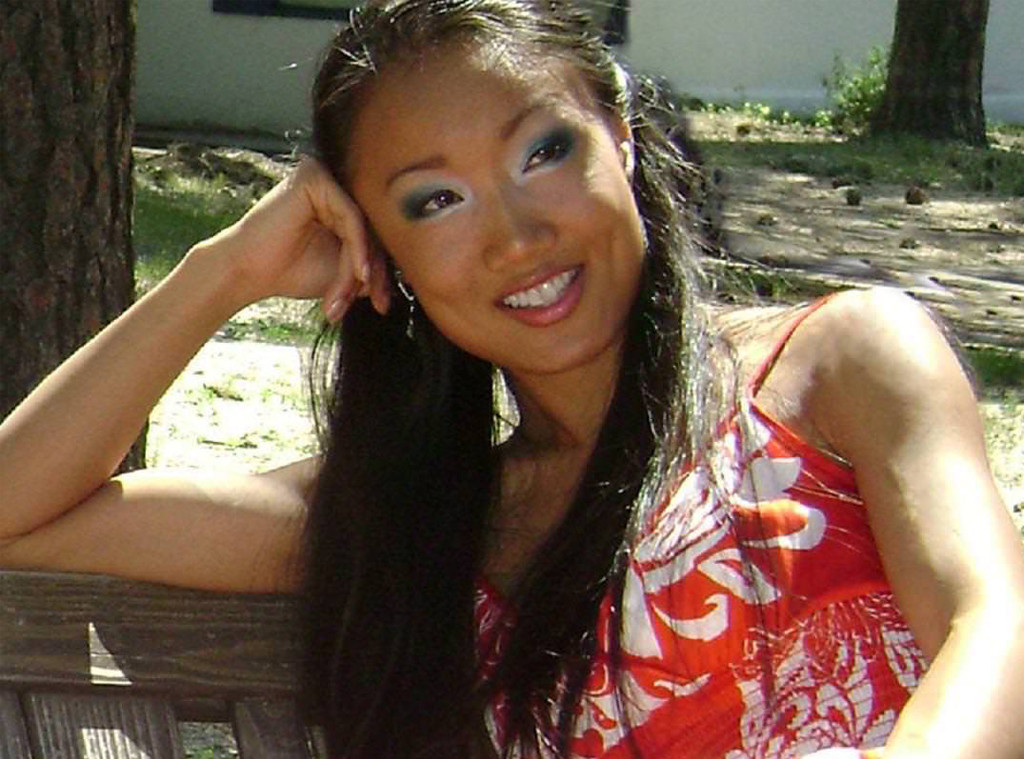
Courtesy of Mary Zahau-Loehner
Adam Shacknai appealed, and in January San Diego Judge Katherine Bacal stated that she was reluctant to throw out the jury’s verdict despite the defense’s allegations of juror misconduct and numerous erroneous rulings during the trial. And she, too, had questions.
“The Court feels remiss if it does not state that the Sheriff’s investigation leaves almost as many questions unanswered as answered,” Bacal wrote in her ruling, per the LA Times.
“Given these facts alone, common sense says Rebecca did not paint the amateurishly painted message on the door,” the judge wrote. “And if she did not, someone else did. Determining who wrote the message would certainly be circumstantial evidence pointing to who killed Rebecca Zahau. This was only one of numerous pieces of circumstantial evidence that puts the Sheriff’s conclusion into question.
“As a result, it is not unreasonable to still ask, ‘Who killed Rebecca Zahau?'”
Adam Shacknai adamantly maintains that he is completely innocent.
“Apparently, it didn’t seem to do a lot of good in that trial because people will believe what they want to believe with no evidence,” he said on NBC’s Dateline in November.
In February, with Bacal due to hear final arguments, Zahau’s family and Shacknai’s insurance company reached a settlement of $600,000, resulting in the civil case being dismissed with prejudice, meaning it can not be refiled. That in turn vacated the jury’s $5.167 million verdict and means he’s no longer legally liable for Zahau’s death.
“I guess my insurance company did an end around this whole process,” Shacknai, who said he was not aware that negotiations were taking place, told reporters after the dismissal, per Fox 5 San Diego. “They believed in my innocence but they were tired of throwing money at it. They settled for a pittance. Extortion is alive and well.”
“Mr. Shacknai is aware that most people are not going to understand the legal particulars,” his attorney Seth Weisburst said. “He very much wanted to take any opportunity he can, whether it’s in the courts or outside of the courts, to show that this is completely baseless and outrageous—that he had nothing to do with the death of Rebecca Zahau.”
But such legalities have done nothing to convince Zahau’s family that she killed herself.
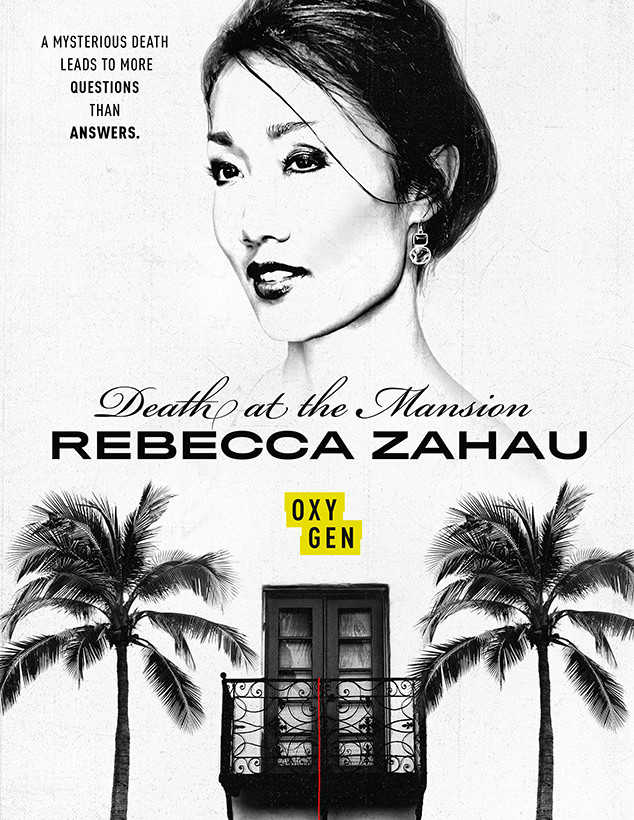
Oxygen
Greer told People last month that they’re considering filing suit against the San Diego County Sheriff’s Department next in their ongoing quest to get manner of death changed from suicide to homicide.
“We conducted an objective and thorough investigation into Miss Zahau’s death,” the sheriff’s department stated in reply. “The facts of that investigation have led to the conclusion that Miss Zahau took her own life.”
In May, Investigation Discovery aired Rebecca Zahau: An ID Murder Mystery, and tonight Oxygen takes over the quest with Death at the Mansion: Rebecca Zahau.
“We want Becky’s name out there,” Doug Loener, Mary Zahau-Loehner’s husband, told Fox News recently.
“We want to apply more pressure to the sheriff’s office to do the right thing. I hope there’s public awareness. I would love to see what these detectives are seeing. I’m certainly not seeing what they’re looking at. I’m truly not. The only thing I can see is that there’s homicide written all over the place… Becky was killed. You can’t treat people this way.”
Death at the Mansion: Rebecca Zahau premieres Saturday, June 1, on Oxygen at 6 p.m.
(E! and Oxygen are both members of the NBCUniversal family.)
Be the first to comment